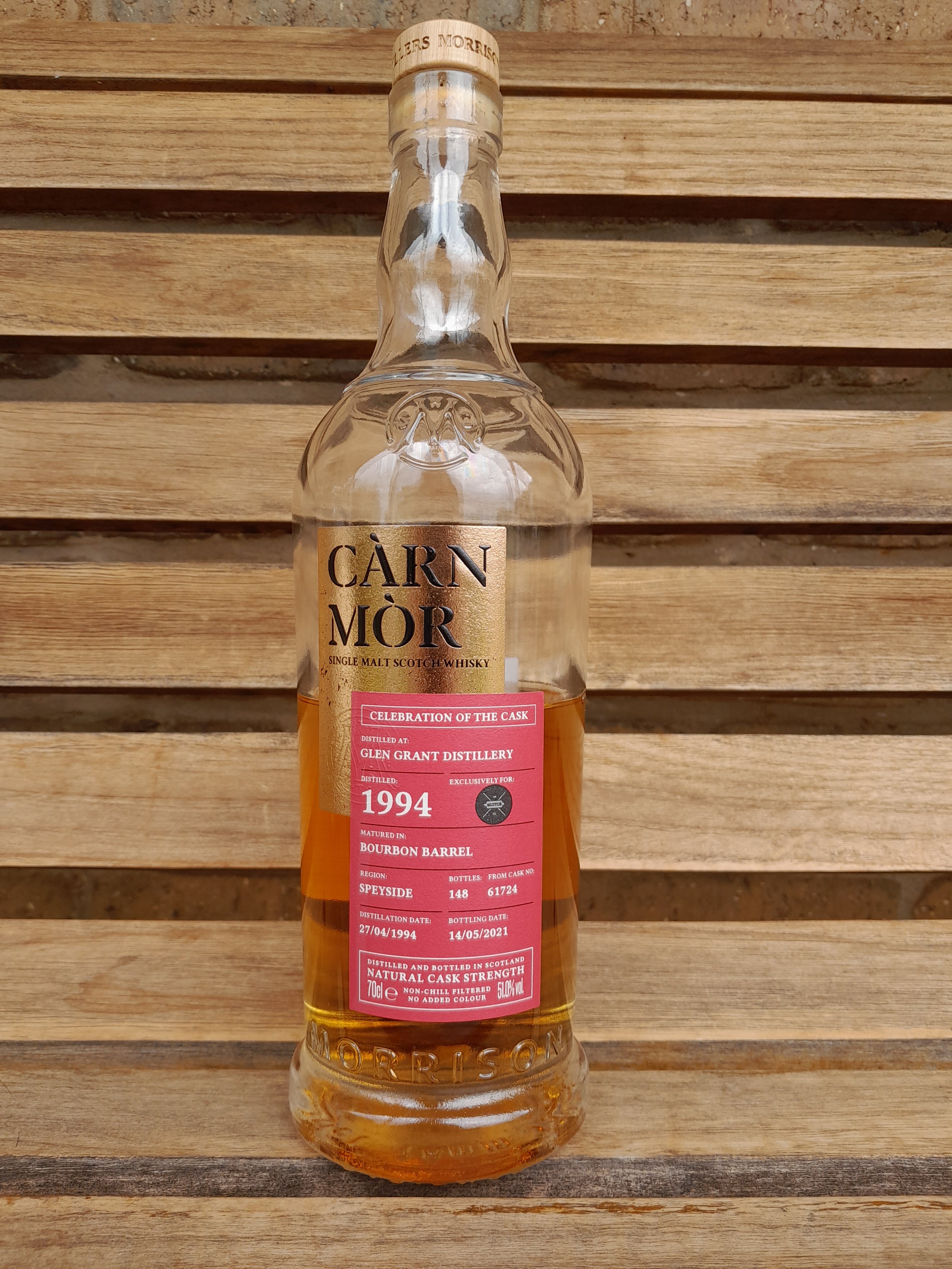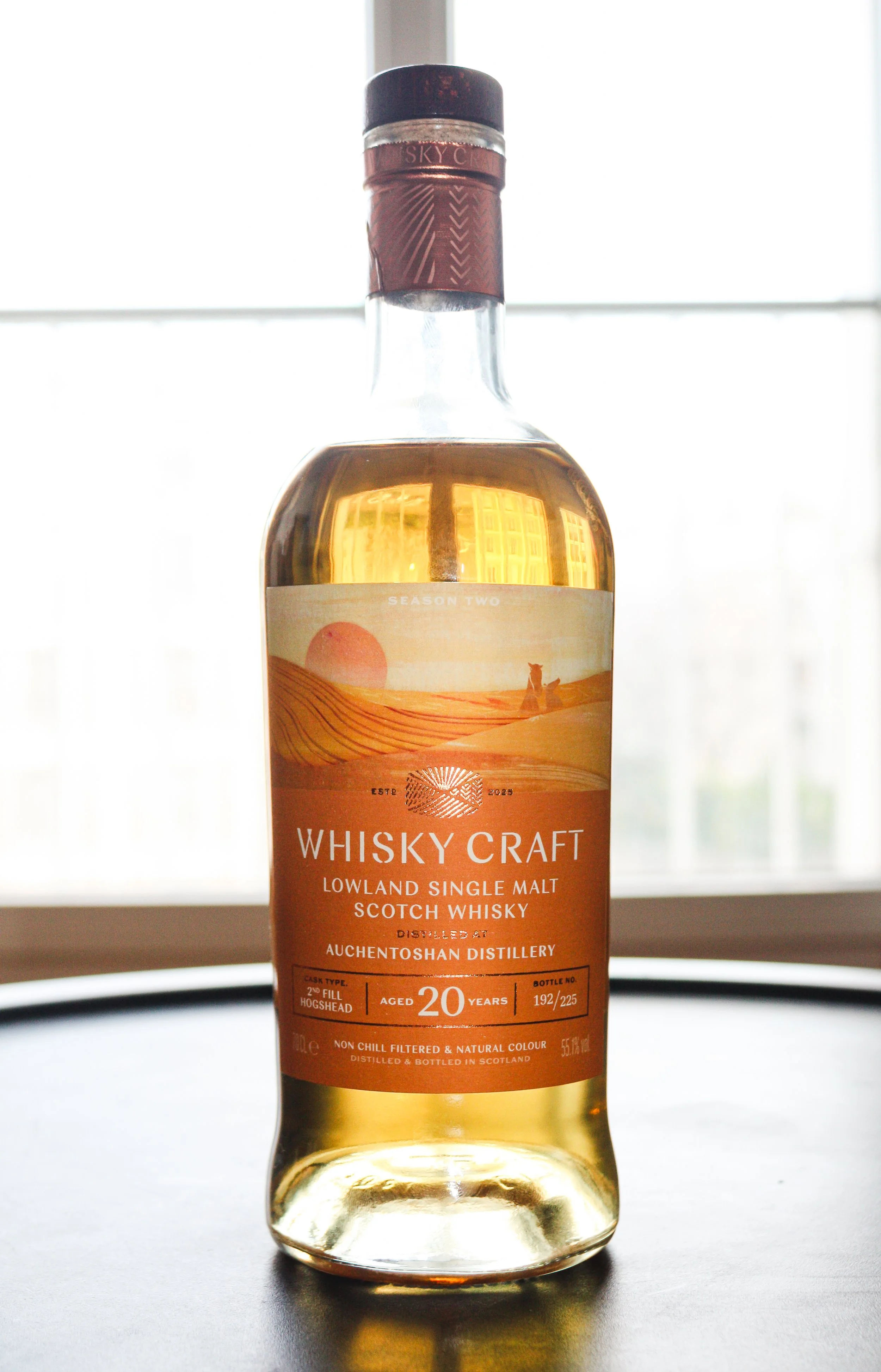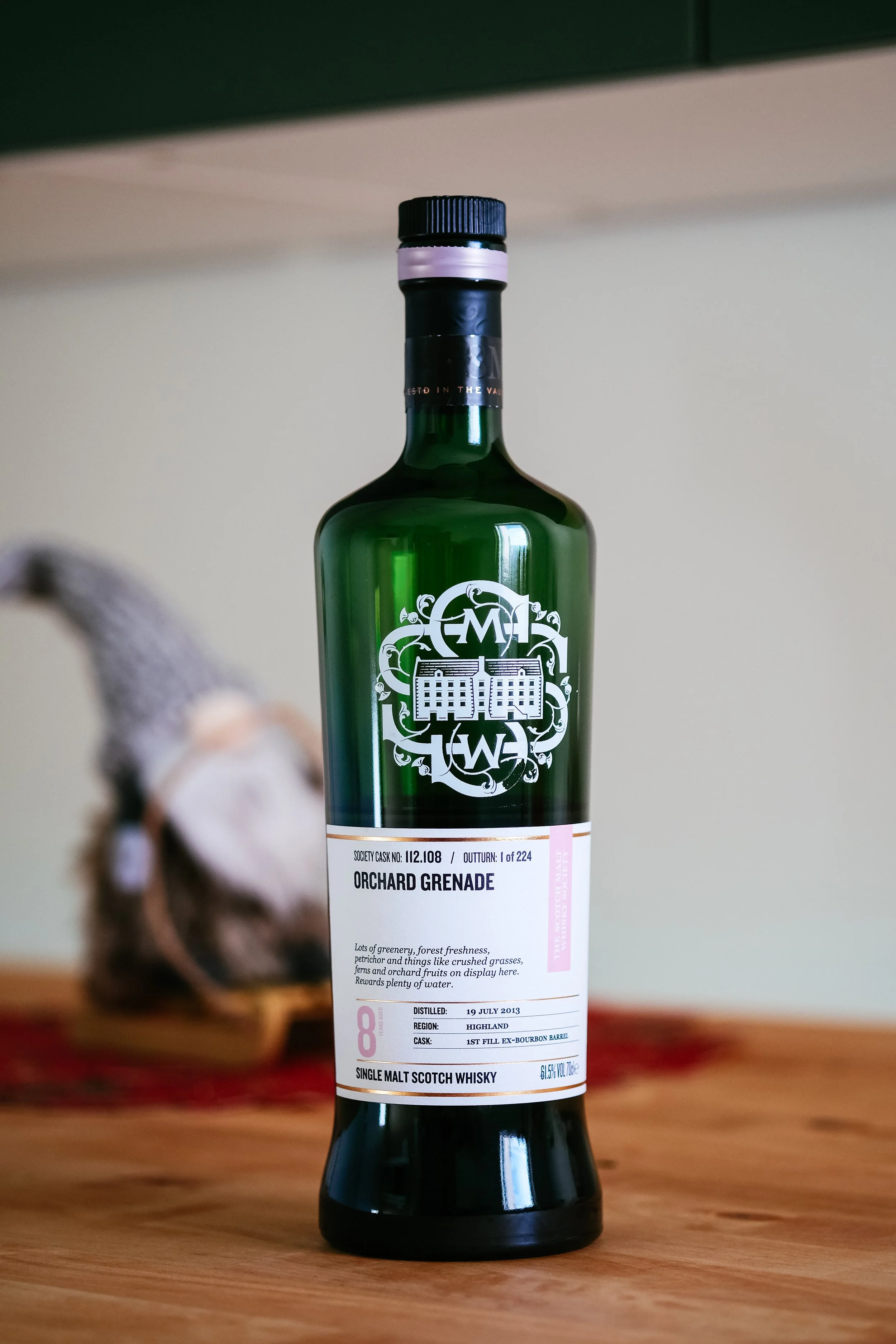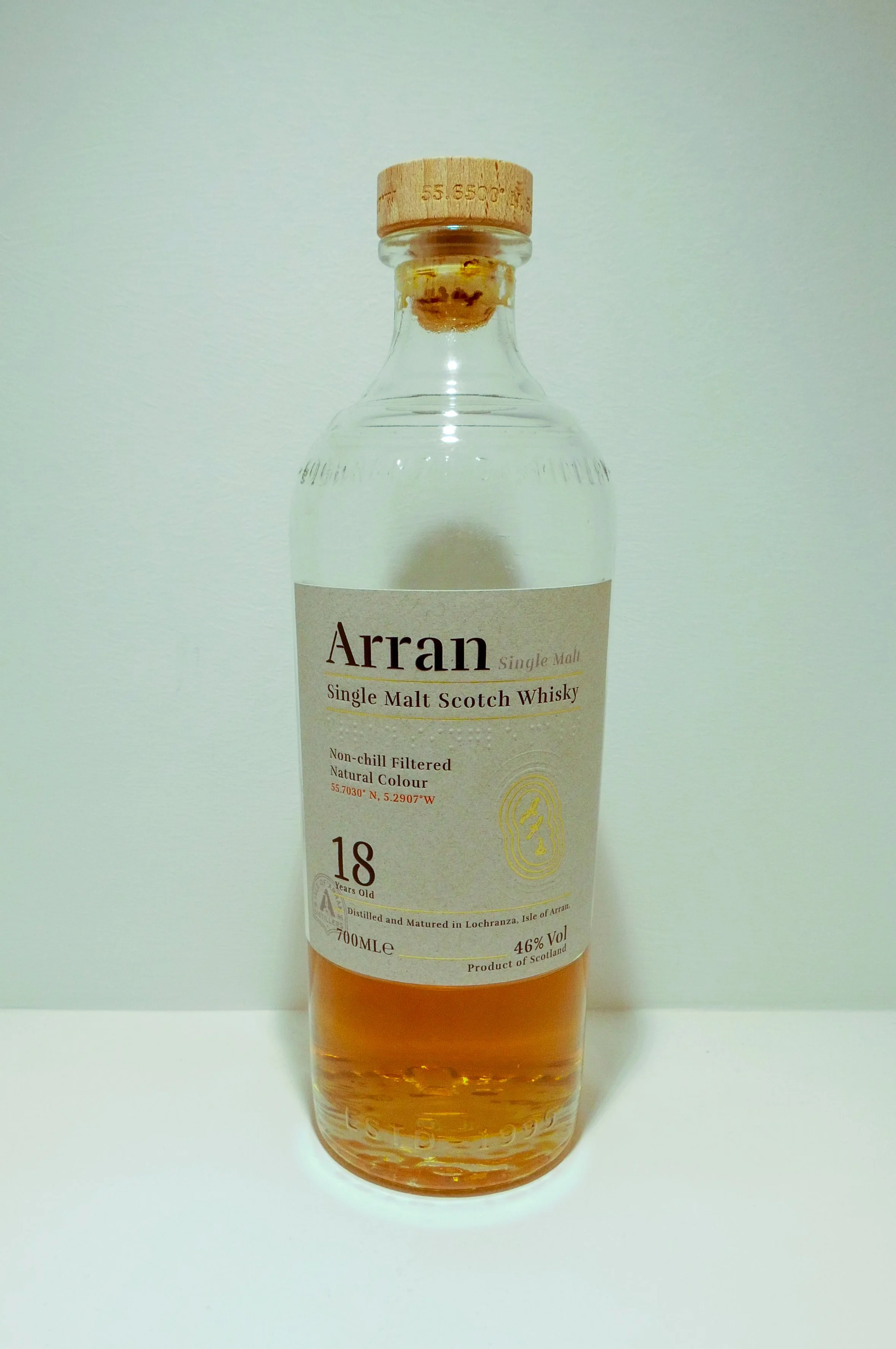Glen Grant Duo
10yo & 1994 Vintage | 40% & 51% ABV
Score: 5/10
Average. In a good way.
TL;DR
A shout out for the effort
We Are a Fickle Community.
The pursuit of flavour perpetually sends us down new and varied rabbit holes, hunting for the next sensory delight. We juxtaposingly praise innovation and tradition, offering our dollars and whims to any idol that provides uniqueness.
This is perfectly natural; we are all sensory explorers set adrift in an expanse of physico-chemical delight. But we should not forget the labours of those that march to a different, more even tempo; consistency. Let me tell you; consistency is hard.
Consistency takes a lot of work. In the case of the big guys, it usually means computerisation and automation, as well as the skills of those needed to install and maintain such equipment and systems. All of that costs bucket loads of money, which naturally means that there is significant investment. Investment means a commensurate return on investment, which usually means sales teams, marketing professionals and all but literal hell hounds getting involved. The whole thing becomes so quintessentially capitalistic that I couldn’t blame anyone for becoming disenfranchised, cynical and even downright pessimistic about the whole exercise. Trust me, that’s the default in maison de Kai given the current whisky market.
It is forgivably easy, then, to forget just how much knowledge, specialty and skill is also involved in formulating a consistent product. Folks like Drs Bill Lumsden, Stephanie Macleod, and Rachel Barrie (to name but a few) all have serious experience and credentials to draw upon in what can only be described as a monumental task; maintaining the bottlings which have become industry benchmarks. The number of senior blenders with graduate degrees or higher in chemistry and related fields should also be an indication of the rigours demanded of these individuals.
This isn’t to say that one must have some high level degree hung from their wall to make good whisky, nor are such qualifications any guarantee of quality. Indeed many fine distilleries (think Springbank) rely on tradition and an unwavering commitment to historical practice to guide their production methodologies, such that the answer to most questions about their process are usually answered with “That’s the way we’ve always done it”. As long as nothing changes in their process due to necessity, that should continue to be a valid approach. Even then though, we see significant batch variation in their bottlings, and embrace that as being part and parcel of the distillery’s approach; as long as the core DNA remains the same, who cares?
But consistency at the level of the big boys would be all but impossible without the labs, the white coats, the pipettes, centrifuges and other shiny instruments with very large price tags. It is a different style of product, something usually thought of as meant for a different customer base to we the whisky nerds.
If you’ll all indulge me in a slightly meandering tangent, I’d recall the early days of my craft beer journey. I remember thinking, probably while sipping on some 80+IBU hop bomb, that brewers who worked for big companies making boringly conventional lagers or similar must be incompetent, utterly lacking any professional self respect, have rubbish palates or be some combination of the three. Funnily enough, the first production job that I got working in a craft brewery was as an assistant to the head brewer, who’s last brewing gig had been for the South Australian icon that was West End. Icon they may have been, but the beer was hyper-commercialised and, to be frank, pretty awful. It was through working with this gent though that I came to realise how very wrong I had been.
In the early days of his adulthood, he’d graduated from university with honours in a chemistry degree, which helped to land him a position working in a pharmaceutical lab. He’d then gone on to do various other things, including teaching at high schools for a while, before discovering his love of brewing and settling into a new career.
Through talking with him about his colleagues, I came to discover that this sort of trajectory was not at all uncommon; there are a high proportion of overachieving geeks that started out in hard sciences, only for their love of grain beverages (an appreciation which I maintain is facilitated by the STEM university lifestyle) to lead them down the beautifully debaucherous path that is crafting booze. The longer that we worked together, the more that I learned from him, and thus increasingly appreciated how difficult it is to manipulate agricultural ingredients with so many production variables into a consistent product. Though we worked together for a relatively short time in the grand scheme of things, those discussions were some of the first seeds planted which have driven me to want to understand as much as possible about brewing and distilling.
What does all this have to do with the whiskies being reviewed below? Well, I think there are very few distilleries in the modern era that make such light, clean and consistent whiskies. As beige as that might appear, the next time you pour a dram of some universally-available-OB, consider how much time, research and expertise went into crafting that bottle. Mull over the importance of having it as an anchor point for your nose and palate, as well as for comparing it with the undoubtedly myriad weird and wonderful bottles we all seem to accrue in this lovely wee community.
The ability to do such is a privilege.
Review 1/2
Glen Grant 10yo, Official bottling, 40% ABV
AUD$80 (£40), AUD$65 paid
Seriously, the ten? Why not pick the new 15, with the higher ABV and generally better integrity bottling? Considering the comparative price vs. age and ABV, it’s at least as good value, very probably better.
Well, I picked it for two reasons. Firstly (and honestly most importantly) it’s what I have on hand. I bought this bottle last year to use for blind tasting training, and ever since it’s been a very handy reference point for comparing other similarly light styles of whisky. That brings me to the second point; this is one of those staple bottles which most of us have had at some point on our journey, much like Glenmorangie 10yo, Glenfiddich 12yo, Glenlivet 12yo and many others.
That said, I do think this enjoys a couple of subtle points of difference; most of these styles of bottlings use both bourbon and sherry casks (the Glenmorangie notably excepted) whereas the Glen Grant comes only from bourbon casks. Glen Grant also makes famous use of purifiers on their stills, which may assist in keeping the spirit clean and light, despite the latest Ardbeg committee bottling’s attempts to prove otherwise.
Score: 5/10
Average. In a good way.
TL;DR
We need to keep a space in our cabinets for bottlings such as this
Nose
A quintessentially fresh, clean and friendly Speyside character. Barley lollies, long lagered pilsner, the spray from cutting an apple and other related youthful orchard-fruit esters. There’s a hint of foam banana too, then mild marzipan, vanilla and creamy cask lactones.
Palate
Exactly and perfectly “malt whisky”. All of the nose again with some added cask stuff; soft werther's original (still warm from nan’s pocket, naturally) and soft baking spices, but globally still dominated by those beautifully easy distillate fruits and beery maltiness.
The Dregs
I think probably the only accusation that could be levied against this bottling, aside from the style of presentation, is that it’s a wholly modern style. This isn’t jazz, there are no beats leading or lagging the tempo. Rather it’s a new studio approach with digital time alignment, click tracks and surgical precision. Could we argue then that it lacks some character? Yes, perhaps. But it’s a bit like being mad at a digital stopwatch for not being able to make phone calls; not the brief, chief.
It’s only my personal opinion, but I think a handful of these types of bottles belong on the back of everyone’s bars and shelves. It’s all too easy for our palates to become desensitised to big, unique and sometimes whacky flavours. Having a faithful, consistent reference point to return to gives us better objectivity when analysing these more off-the-wall bottlings. I doff my cap Glen Grant.
The value proposition isn’t outstanding, but I don’t think it’s bad either, so no score alteration on value.
Score: 5/10
Review 2/2
Glen Grant 1994, Càrn Mòr Celebration of the Cask, #61724, 51% ABV
AUD$400 (£215), AUD$300 paid
Score: 7/10
Very good indeed.
TL;DR
An easy going, clean and approachable Grant
Nose
Aye, there are certainly some vibrant distillate esters again, but they’ve been morphed by maturity. What was apples, pears and globally orchard fruits are now more oriented to ripe peach, light pineapple and overall some clean (ie low g/HLAA ester) rum-geared tropical fruits. There’s significantly more cask extract too; desiccated coconut, vanilla, quite some toffee, melted butter, a tinge of freshly stained hardwood and baking spice. There’s still a nice undertone of malt, though it’s softer than the 10yo.
Palate
Quite lovely; much of the nose again but with a subtle addition of lemon-drizzle. The tropical fruits are still in there, but a little more second fiddle to the casks, particularly a robust sense of lactones and sweet caramels with a smidge of outright woodiness underneath. There’s a fairly pleasant wee tint of dryness on the back palate too. Water does a solid job of lifting the fruits and softening some of the casks; definitely prefer it around 45-48% ABV.
The Dregs
This gets quite close to that ubiquitous first fill bourbon SMWS profile; milk bottle lolly and lactones galore. Luckily the spirit is still well on display, but the cask could probably have been pulled a few years earlier for my palate.
That’s a minor quibble by the way; this is a tasty whisky with textbook Glen Grant cleanliness, a nice bit of fruity maturity and some very appealing cask goodness. Were I in the mood for a sweet dram without having to do battle to find a clean sherry cask, this kind of style would be an easy go-to.
The retail price is neither great nor awful in the grand scheme of things, though I must say the price I paid was pretty good. This had me stumped for a while trying to score it; ultimately, this is a rather tasty drop that was pretty fairly priced for the age and integrity of bottling, so I erred on the higher mark. That said, if I were in a fussier mood, had paid regular retail or perhaps hadn’t played around with diluting it so carefully, this could have easily wound up as a 6. Take from that what you will.
Score: 7/10
Tried these? Share your thoughts in the comments below. TK
-
Dramface is free.
Its fierce independence and community-focused content is funded by that same community. We don’t do ads, sponsorships or paid-for content. If you like what we do you can support us by becoming a Dramface member for the price of a magazine.
However, if you’ve found a particular article valuable, you also have the option to make a direct donation to the writer, here: buy me a dram - you’d make their day. Thank you.
For more on Dramface and our funding read our about page here.

































